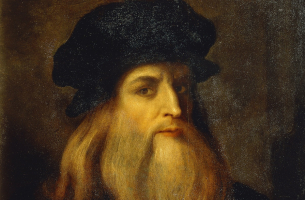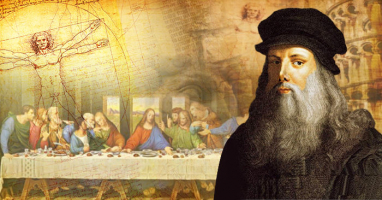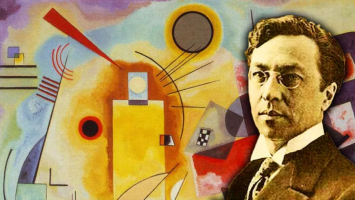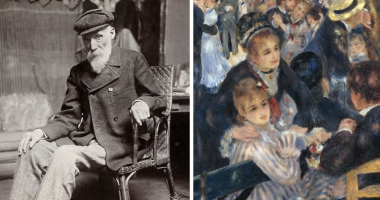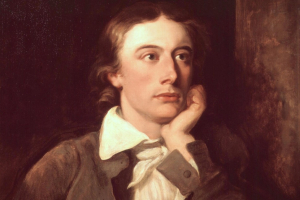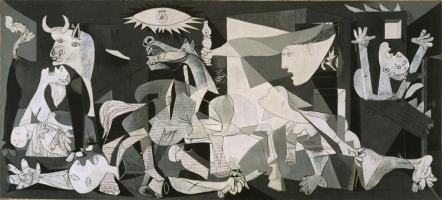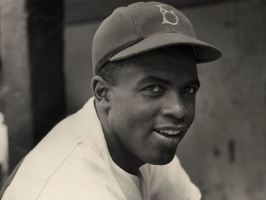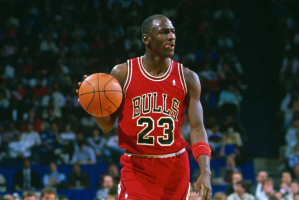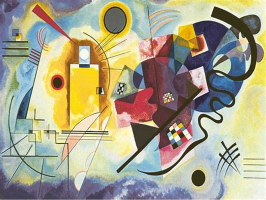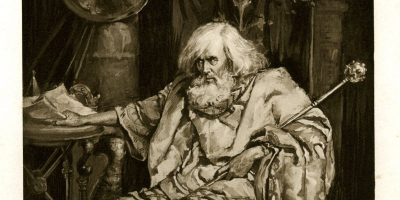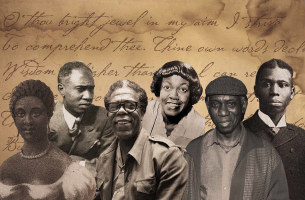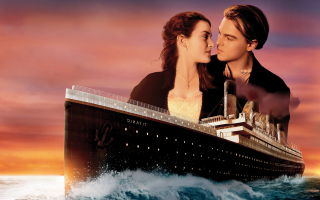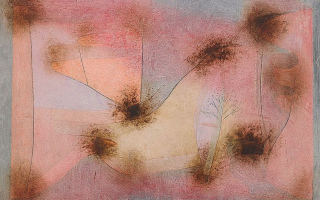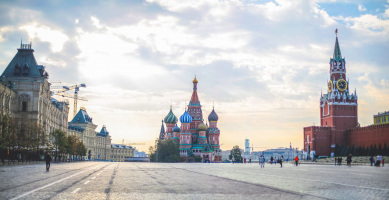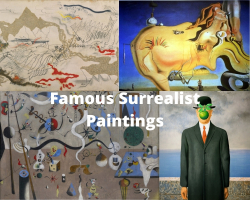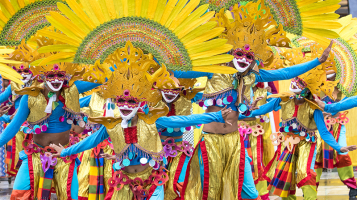Top 7 Most Famous Artworks by Leonardo da Vinci
A well-known Renaissance artist, Leonardo da Vinci produced several works of art, sculptures, and innovations. He is regarded as one of history's most clever ... read more...individuals. He made a significant contribution to Western civilization and changed the direction of architecture, art, science, and technology for generations to come. Da Vinci produced some of the best artwork ever, and every year millions of people across the world visit his works. And here are the most well-known artworks by Leonardo da Vinci.
-
One of the most intriguing paintings in the entire globe has always been a Leonardo da Vinci creation. With innumerable copies made in numerous sizes and mediums, it is also one of the most widely copied paintings in the whole globe. Lisa del Giocondo, Francesco del Giocondo's wife and the mother of their two children, is shown in the Mona Lisa. Around 1503–1505, Leonardo da Vinci began working on it, and he completed it in 1519. The picture is presently housed in the Louis XIV Louvre Museum in Paris, which was established in 1637.
Given how flawless it seems now, it is impossible to comprehend that this artwork was created 400 years ago. The grin on the Mona Lisa is among the most well-known factors in its attractiveness on a global scale. Da Vinci employed perspective and shadow work to create an eye-catching smile via an optical illusion. The Mona Lisa was painted by Da Vinci in such a way that the lips are just beyond the viewer's peripheral vision and the eyes are in sharp focus. The girl's facial expression lends the image a perplexing character and prompts questions about what the model was thinking, who she was, and why some people find her to be both joyful and sad.
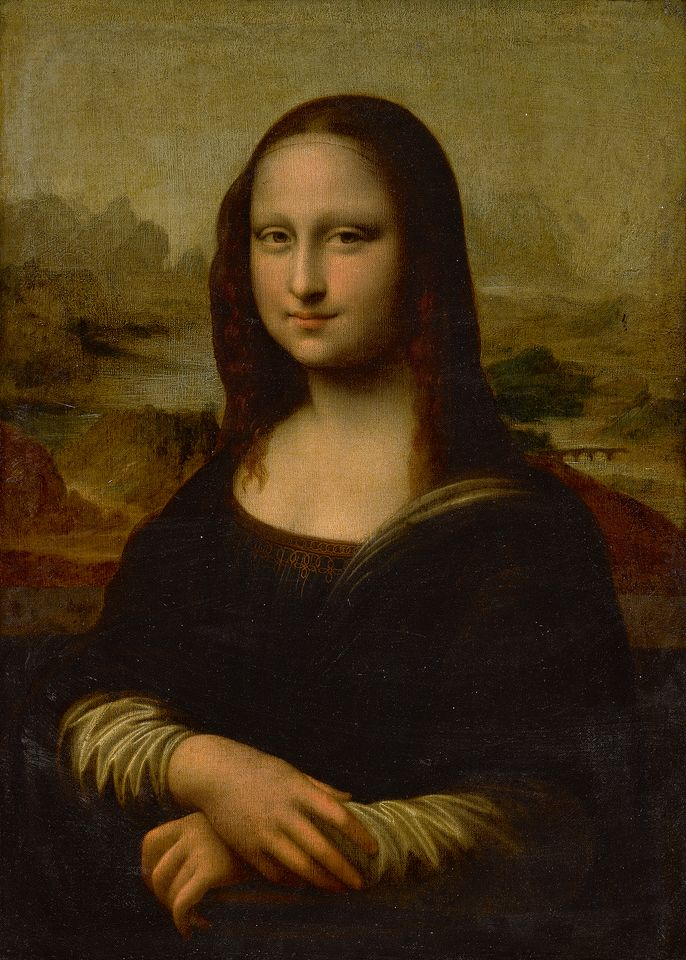
Mona Lisa - Wikipedia 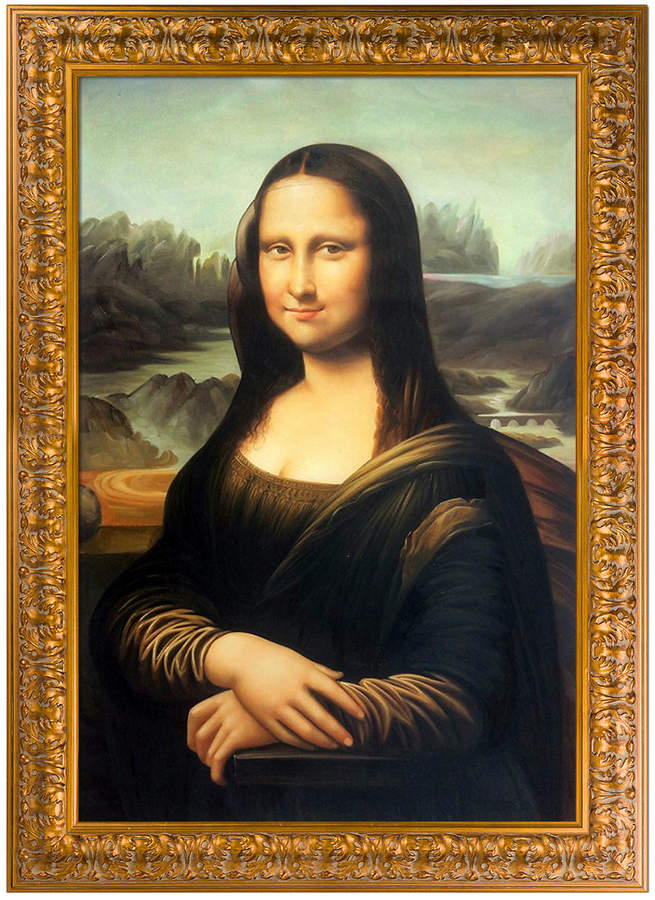
Leonardo Overstock Art Mona Lisa By Da Vinci Oil Reproduction -
One of the most well-known pieces of art in the entire world is The Last Supper. This picture represents the Christian sacrament and its importance to many people. Christ assembled his disciples for dinner the night before one of them would betray him. He also told them what was going to happen and washed their feet (a gesture symbolizing that all were equal under the eyes of the Lord). Christ gave the disciples specific instructions on how to eat and drink going forward in his memory as they shared a meal and beverage together. It was the first time the Eucharist, a tradition that is still followed, was celebrated. One of the greatest frescoes ever created, The Last Supper is not only a unique work of art but also a masterpiece in the history of art and culture. However, Leonardo opted to use his preferred oil paints instead of the typical fresco that is frequently painted on walls.
Oil is thought to have been Leonardo's favored medium since it dries slowly, allowing him to make changes and work more methodically. Leonardo understood that the natural moisture that seeps through the majority of stone wall structures would need to be sealed in order for him to use oil paints; otherwise, his artwork would be damaged. He responded to this by applying a second layer of pitch, mastic, and gesso. The artwork has needed to be fixed several times throughout the course of its extended existence. Due to intentional deterioration as well as environmental deterioration, very little of the original top coat of the oil painting is still present.
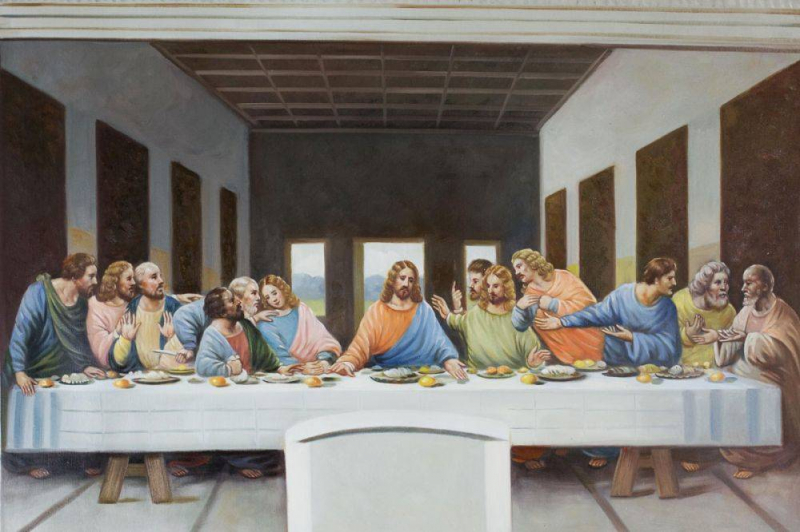
overstockArt.com 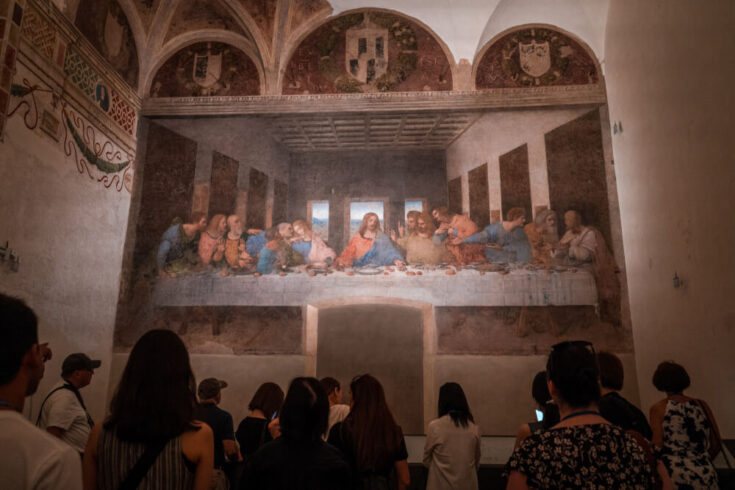
contemporarynomad.com -
An artwork from the 1472–1475 era called Annunciation is an oil and tempura on wood composition. It is situated at the Uffizi gallery in Florence, Italy. Leonardo da Vinci is renowned for his intriguing depictions of biblical events in his paintings. There are several symbols and hidden meanings to be found in The Annunciation. It shows the angel Gabriel telling Mary that she would conceive miraculously and give birth to a baby who would be known as "the Son of God" and whose dominion would never end. This child's name would be Jesus. The annunciation was a common theme in contemporaneous paintings created in Christian nations like Italy, and it had appeared frequently in Florentine art, including multiple instances by the Early Renaissance artist Fra Angelico. The painting's early origins and the specifics of the commission are still unknown. Leonardo may have finished the Annunciation in his early twenties while continuing to work at Andrea del Verrocchio's workshop, whom he had previously served as an apprentice.
The picture contains several elements that have been employed to communicate the narrative. In this artwork, for instance, there is a lot of symmetry, balance, and heavenly powers, which represent holiness and divinity—qualities connected to the angels that visited Mary. The work has many characteristics with previous Leonardesque works like "Saint John the Baptist" and "Virgin of the Rocks".
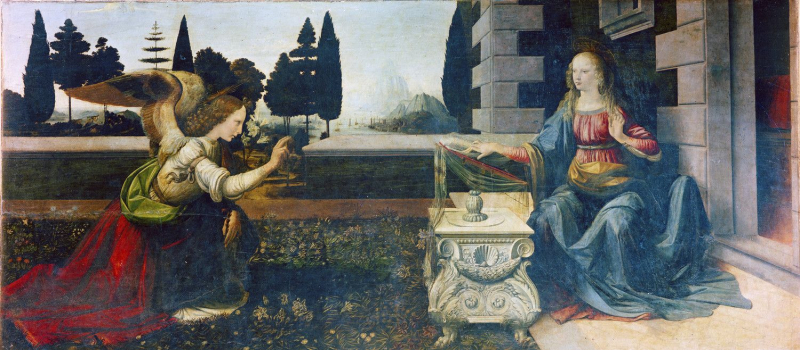
https://www.pinterest.com/pin/434738170256344603/ 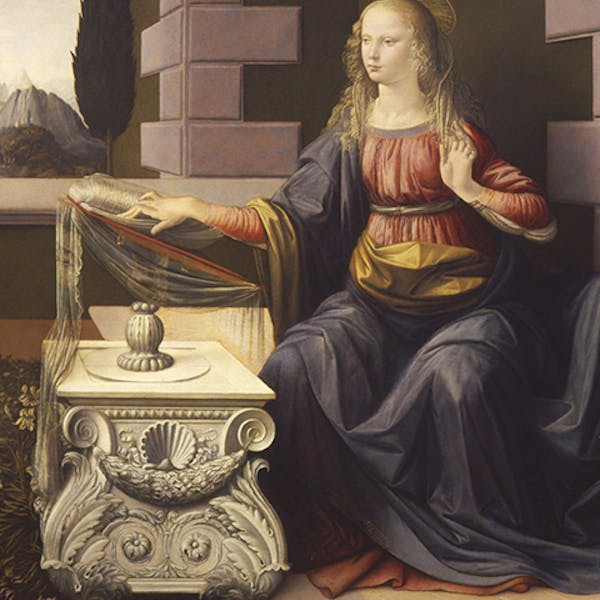
https://www.uffizi.it/en/artworks/annunciation -
Vitruvian Man shows a naked guy in two superimposed poses with his arms and legs spread and is written in both a circle and a square. It was inspired by the works of the ancient Roman architect Vitruvius. One of the several notebooks that Leonardo maintained during his older years contains the pen-and-ink sketch known as Vitruvian Man. It is accompanied by comments on the ideal human proportions that the Roman architect Vitruvius outlined in a treatise on building from the first century BCE, remarks that are written in mirror script.
The painting depicts Leonardo's vision of the ideal body proportions, which were initially inspired by Vitruvius but were also affected by his own measurements, the artwork of his contemporaries, and Leon Battista Alberti's De pictura book. The artwork demonstrates Leonardo's attempts to comprehend important literature as well as his desire to add to them. Although he wasn't the first to depict Vitruvius's ideas, his illustration went on to become the most famous, in part because its fusion of mathematics, philosophy, and art thought to be an appropriate representation of the Renaissance. The drawing is presently held in a climate-controlled archive in the Gallerie dell'Accademia in Venice, where it is rarely on exhibit.
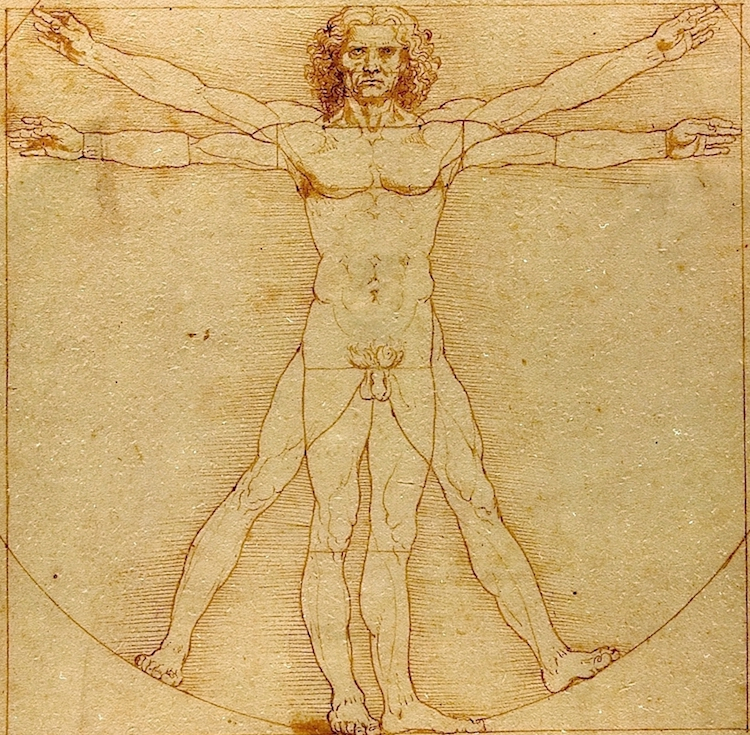
https://feldmanwellness.com/everything-is-connected/ 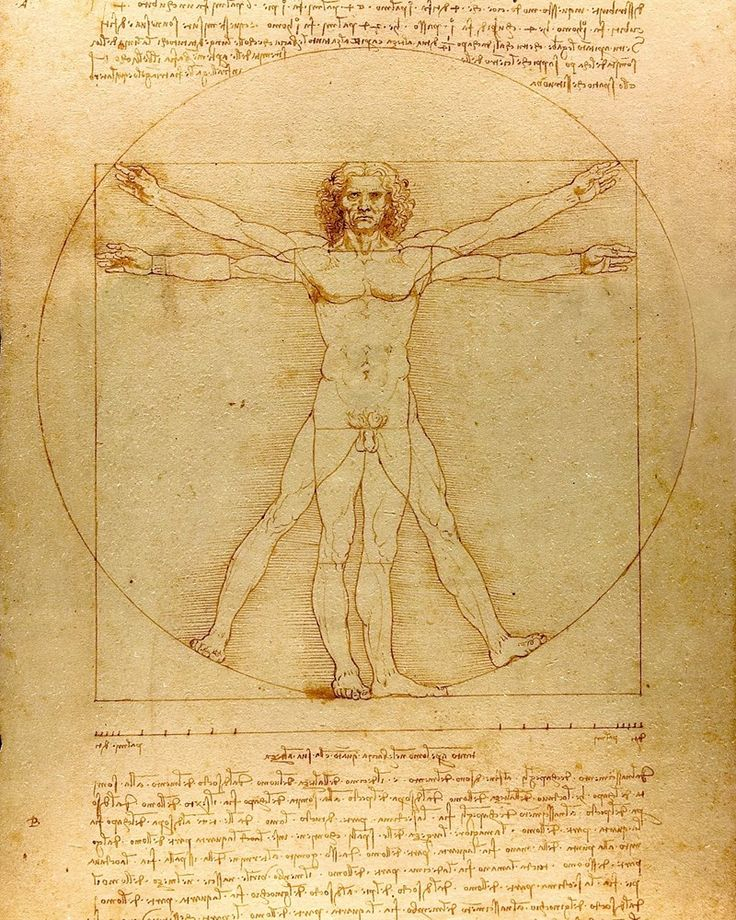
https://www.pinterest.com/pin/706009679068483510/ -
Although the self-portraits are a few of Leonardo da Vinci's most well-known paintings, they are seldom known to the general public and are highly regarded by the art world. This Self Portrait is supposed to have been created by Leonardo da Vinci when he was around 60 years old. The image, which has been widely copied, has come to symbolize Leonardo as a multitalented individual or "Renaissance Man". Despite this, several historians and academics differ on who the sitter actually is.
Red chalk is used to sketch the portrait on paper. An old man's head is seen in three-quarter perspective with his face oriented toward the spectator. The individual stands out for having lengthy hair and a beard that flows over his shoulders and chest. The length of the hair and beard, which is unusual in Renaissance portraiture, symbolizes a person of sagacity much as it does now. The face is characterized by deep brow creases, bags behind the eyes, and a slightly aquiline nose. The grooves from the nostrils had become deeper, as if the man had lost his upper front teeth. The figure's eyes do not meet the viewer's eyes; instead, they are hidden behind long eyebrows and look forward.
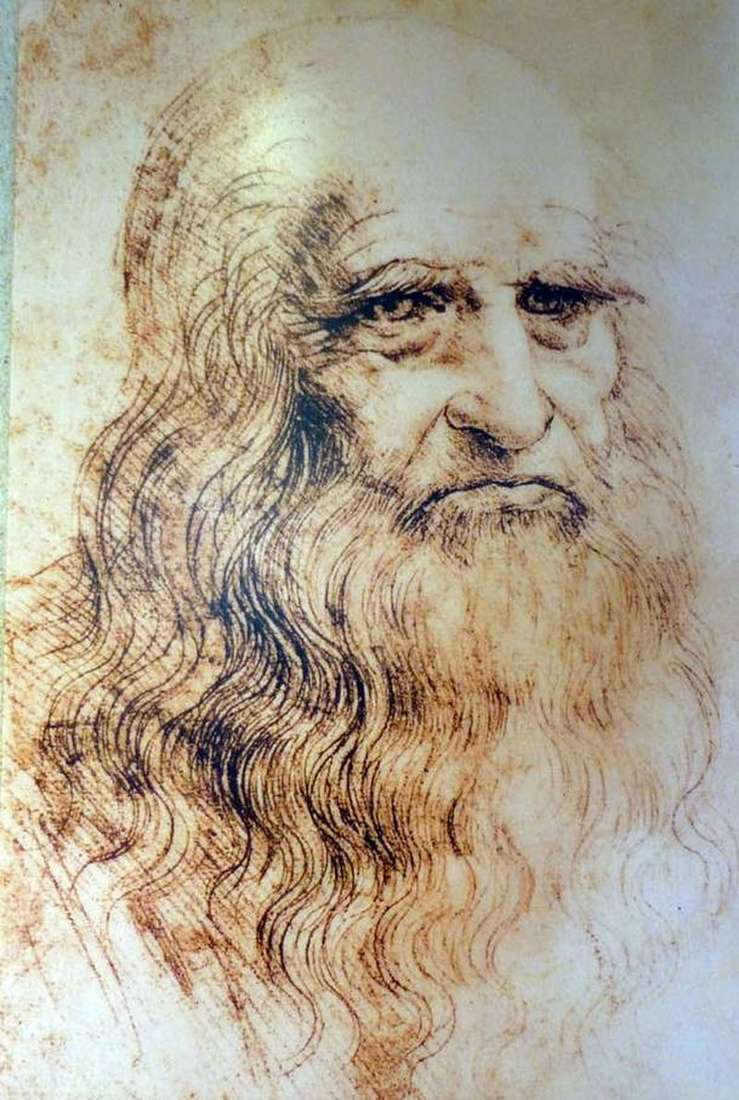
https://painting-planet.com/self-portrait-by-leonardo-da-vinci/ 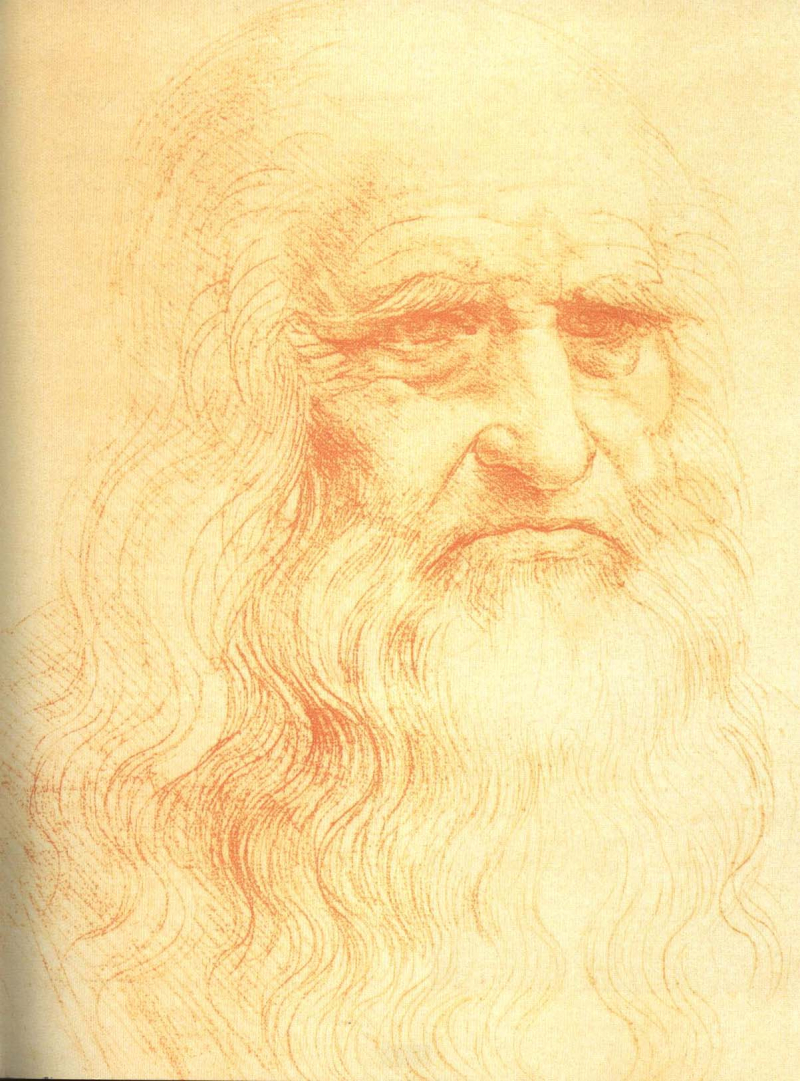
https://www.oceansbridge.com/shop/art-collections/artist-revealed/self-portrait-25 -
Many academics believe that Leonardo's painting The Virgin of the Rocks in the Louvre, which is based on stylistic evidence, is the first of two depictions of an apocryphal legend in which the Holy Family encounters Saint John the Baptist as they flee to Egypt following Herod's Massacre of the Innocents. The Confraternity of the Immaculate Conception, which had commissioned the piece, and Leonardo engaged in years of legal disputes, which finally prompted Leonardo to paint a different depiction of the topic in approximately 1508, which is currently held in the National Gallery of London.
The High Renaissance may be seen in the first artwork, which was created by Leonardo. Early works from this era frequently showed rigid, linearly arranged figures that were separated from one another. However, in The Virgin of the Rocks, the representations of the Virgin Mary, the Christ Child, the baby John, and an archangel are placed in a pyramidal composition and credibly occupy a space as well as engage in gestures and looks with one another. Instead of sitting on a throne, as she was in so many early Renaissance paintings, a young Mary is shown sitting on the ground amid a cryptic rocky terrain.
She tilts her head protectively toward the baby John, who is bowed down in prayer to the left, and it appears as though she nudges him toward the Christ Child to the right. Her body is in motion; it appears to swing. As an archangel, depicted from behind in a complicated position, gestures toward John and casts an enigmatically outward gaze at the audience, Jesus, in turn, blesses John. The Holy Family seems less heavenly and more human because to Leonardo's notable omission of the typical holy symbols—halos for Mary, Christ, and a staff for John.
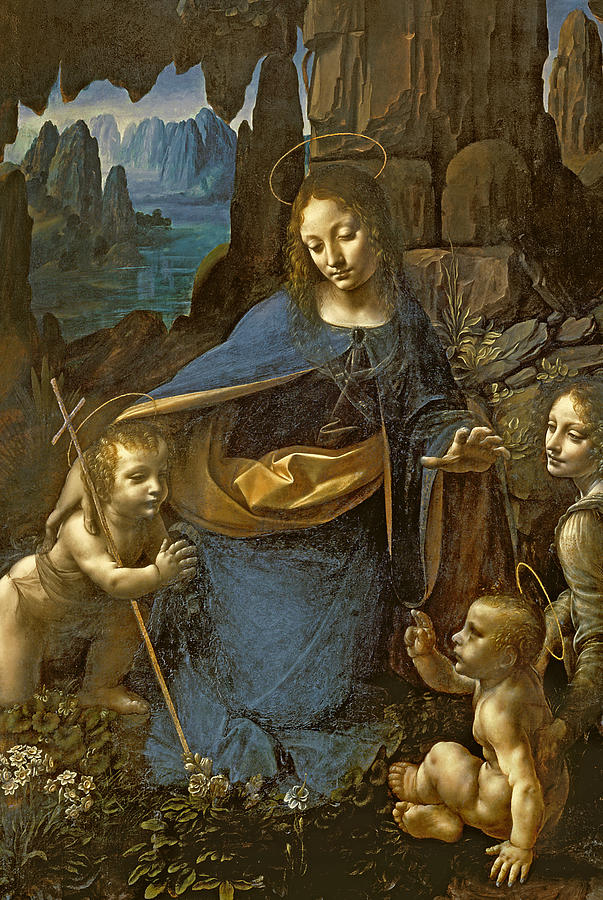
https://fineartamerica.com/featured/the-virgin-of-the-rocks-leonardo-da-vinci.html 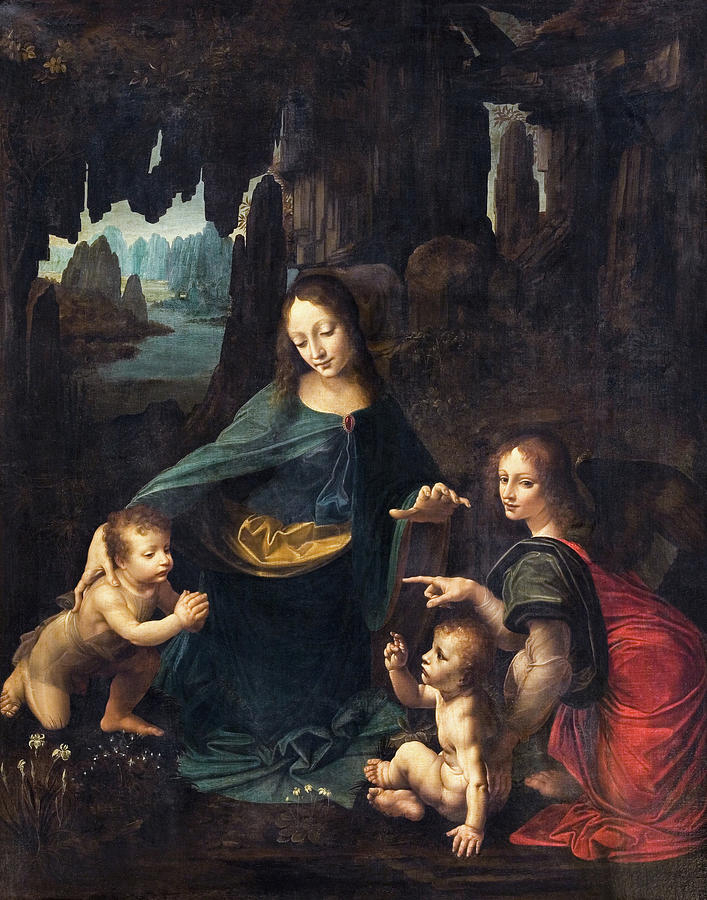
https://pixels.com/featured/3-the-virgin-of-the-rocks-leonardo-da-vinci.html -
Salvator Mundi, which is among Leonardo da Vinci's most well-known creations, holds the record for the most expensive painting ever to be sold at an open auction. In this image, Jesus is holding a clear orb in his left hand while making the sign of the cross with his right. In addition, he is donning a blue Renaissance dress. This work of art by Leonardo da Vinci has an orb that reflects his persona of Salvador Mundi and symbolizes the heavenly sphere of the skies. This picture by Leonardo da Vinci has been imitated and altered by about thirty of his admirers and pupils.
The unconvincing depiction of the glass globe, which if solid would have reflected a distorted view of its holder—an optical trick that Leonardo would have known about - and the stiff posture, which was so unlike the Renaissance master's characteristic twisting poses, were all criticized by many commentators. The criticisms were dismissed by Christie's, the auction house that oversaw the sale, who pointed out that any lack of craftsmanship was a result of extensive restoration work done in earlier centuries as well as the delicate modeling of Jesus' right hand and the finesse of his tightly curled hair, both of which resembled Leonardo's style. Leonardo would have used the same ingredients in the painting, particularly ultramarine, a costly, high-quality blue pigment frequently employed only by virtuosos. The attribution controversy persisted for a long time after the sale, but the demand for the painting and the high price paid at auction proved to Leonardo's continuing fame and to his significant influence on the canon of art history five centuries after his passing.
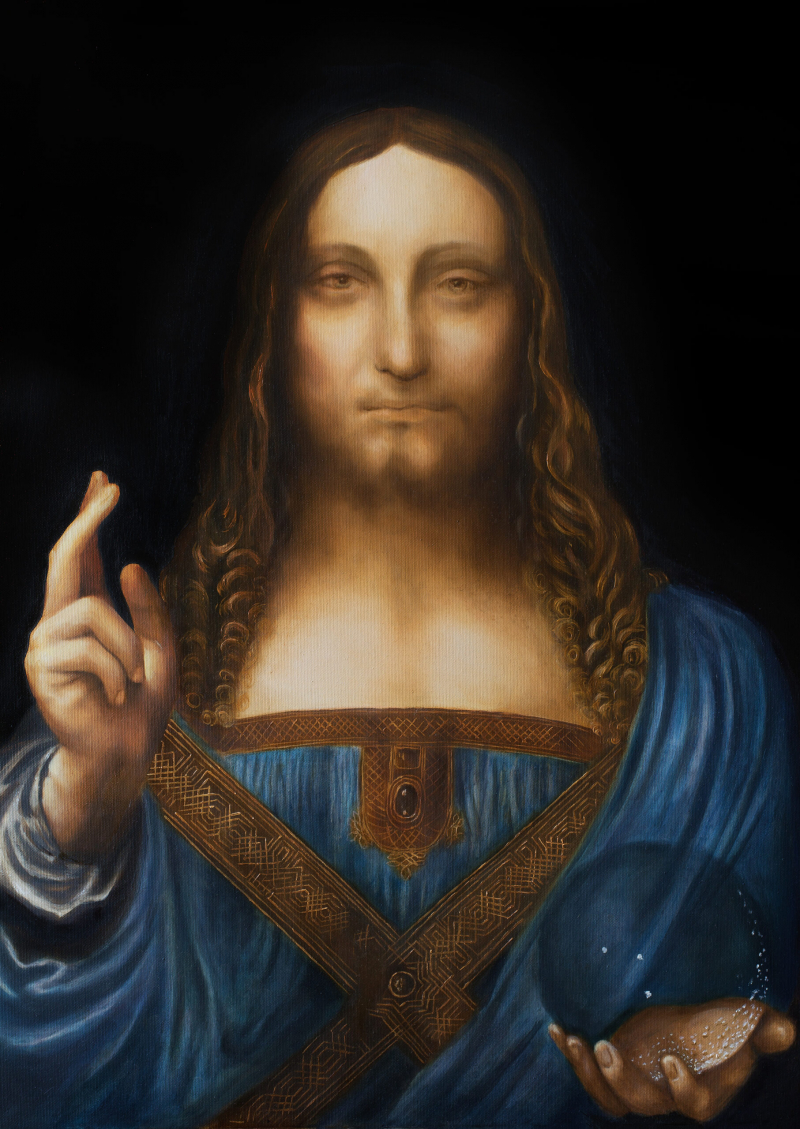
https://luxuryviewer.com/what-is-special-about-leonardo-da-vincis-salvator-mundi/ 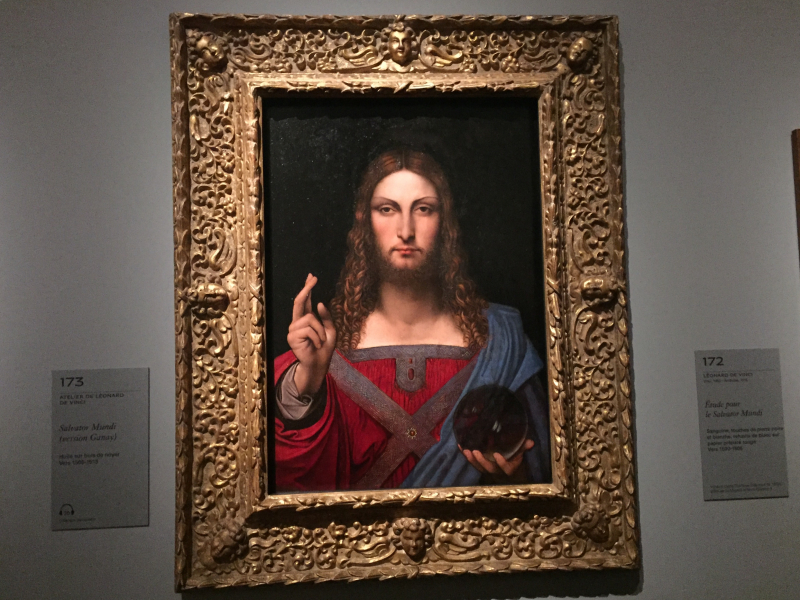
https://yachtclubassist.blogspot.com/2021/04/salvator-mundi-de-leonardo-da-vinci.html









